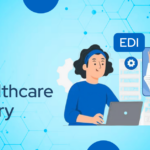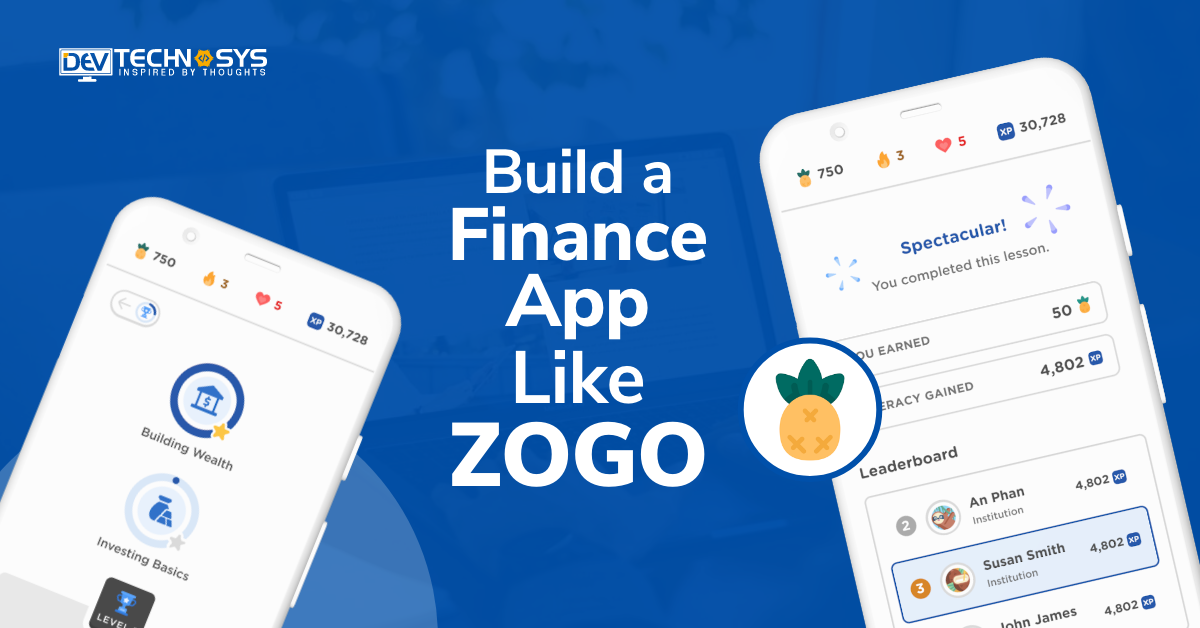Logistics Management Software Guide
Logistic management has existed for many years. However, technology changes many things from the core. The research and marketing team increases IoT use and indulging technologies across the industry. Technology has an immense impact on every industry, not only Logistic software but also it changes the way of working. Suppose one person has to handle the complete data of the logistic company. So it won’t be possible to go and talk to each person to make updates. So here comes the technology, where you can use IoT to handle the entire data in one place. Moreover, with the technology, logistics will become faster and more refined, changing the way of materials, freight, goods, sales order, and production management.
Table of Contents
What Is Logistics?
To understand what is Logistic, you must understand what is logistic according to the Council of Supply Chain Management Professionals (CSCMP) definition. Logistics is the process of planning, implementing, and controlling procedures for effective and efficient transportation and storing of goods. It includes related information and services from origin to consumption, conforming to the client’s needs. With the integration of on-demand app development, logistics has gone through many changes, which are both bad and good.
What Is Logistics Management software?
While improved technology has changed many things, thus, technology logistics needs to adopt a new approach to deal with the rising demand and complexity of the processes. The industry needs a solid solution to manage the flow of things so the logistic system would provide the product to the customers at a particular time. Here are the different issues the logistics software companies must face while implementing logistic software development in the process. To know what the challenges logistic management would face. Keep reading this article, and you will get the knowledge of everything you need to know. Here are the two main components of Logistic management.
These two Components of Logistics define the process of forward and reverse flow. These components refer to the flow path of the goods, services, and information from the origin to the customer and vice versa. Below are the examples precisely
- Forward Flow: A tree is cut, paper is made, the news is printed on it, and it is bought and read by the customer. It is the forward flow because it goes from an origin to customers.
- Reverse Flow: A client wants a car to purchase, the company offers a buyback of the old car for a discount, and the old car is used for parts.

What is the Logistic 4.0
Logistics software development is regularly changing, and here Logistic 4.0 has come. Just as the modern factory is adding new technologies and intelligence to make connected, interoperable workflows, the modern supply chain is rapidly becoming smarter, more networked, and more technologically advanced. Though the so-called fourth industrial revolution gets the most attention, another revolution is occurring. Simultaneously within the world of logistics management software. Here are the components of Logistic 4.0.
Components of Logistics Management Software
Industry 4.0 is defined by IoT devices and machine-to-machine communication devices to create factories operating like smart homes. Multiple machines are brought into constant communication to create a cohesive, highly visible system. The result is that areas of waste and inefficiency are uncovered, certain decisions can be more optimized, and simple processes are automated. The immediate result of creating a digital and networked value chain is that mission-critical data is not just available but also eminently usable.
With the degree of visibility, the entire supply network is developing countermeasures or any backup plans in time to protect smooth operations. Many companies use third-party logistics software. For example, a supply chain manager with access to data from IoT-enabled warehouses might be able to detect based on heat and light conditions for a specific group of products that are likely to become damaged. Even if it were too late to project the damage, only knowing about the issues would enable the warehouse to send an order to replenish the damaged items.
Current Stats On Logistic Management System Software
The adoption of Logistic new technology is an immense increase in the future. With the change in Logistic technology, mobile app development will also increase. The following graph shows the logistic benefits and future growth.
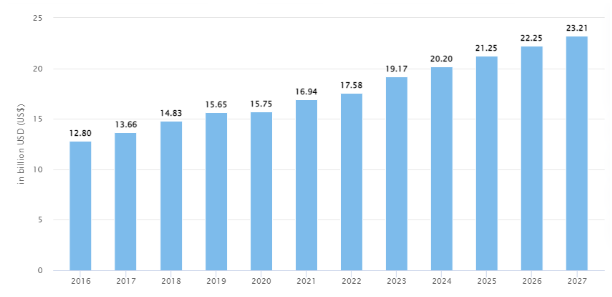
- Revenue in the supply chain management software segment is projected to reach the US $17.58bn in 2022
- The revenue is expected to show an annual growth rate (CAGR 2022-2027) of 5.7%, resulting in a market volume of US$ 23.21bn by 2027
- The average spend per employee in the supply chain management software engagement is protected to high till US$ 5.9 IN 2022
- The market share of Blue Yonder was 0.0 by 2020
- The most generated revenue in the US is US$8,788.00m by 2022)
Overall Benefits Of Logistics Management Software
Technology’s evolution pushes the boundaries and changes how the world does business. At the initial time of technology changes, the logistics manager has to hire software developers who can handle the different software initially. Today, people usually do everything online and at their fingertips for immediate access. The improved technology benefits the productivity in the supply chain, minimizing cost and error. These technological advances benefit all areas of the industry like trucking transportation, supply chain management, international transportation, and shipment tracking.
Here are the five major technology advances changing the logistics industry’s future.
- Tracking System:
Previously, customers booked shipments, received an estimated delivery date, and were left in the dark until customers wouldn’t make a phone call. Today, software advances and the internet allow clients to access the shipment and tracking order 24×7. It’s not just customers who get user experience benefits, but it also saves time and money for the company. Many companies can use the logistic tracking software, which helps them to track the client’s order, and even clients can track their products. Developers can use it in travel app development where users can get benefits.
- IoT (Internet of Things) and RFID (Radio Frequency Identification):
Did anyone think years ago that you would be able to turn your ceiling fan from your smartphone? Today, many devices have built-in Wi-Fi capabilities and sensors, from cell phones to ceiling fans to cars. People love the easy access to Wi-Fi, and the internet connects everyone to everything. That’s why it’s called the Internet of Things. IoT opens up many opportunities to supply chain management, like reducing costs and delays by avoiding risks. Whereas RFID technology has been used for a few years, it is a popular labor-saving way company can track their inventory. Plus, if developers want to use IoT, they can use it in fleet management app development.
- Autonomous Drones and Trucks:
A world where a computer drives a manager from one point to point or the logistic manager receives a package from a flying crewless aerial vehicle sounds like something out of a movie, but that is where we are headed. Autonomous cars are already a reality, with trucks not too far behind. Embark and Uber have already made long hauls using autonomous trucks, with Tesla releasing a truck this year. However, it wasn’t completely driverless, with a driver in the passenger seat to monitor the computer. It is a big step in breakthrough technology and has the potential to lead to efficiency in the delivery process. Hence, improve your business with fleet management applications.
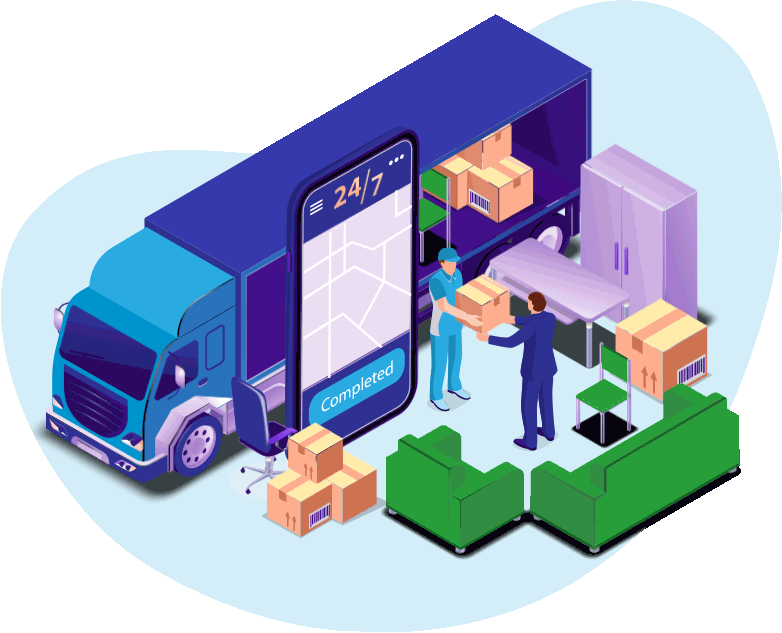
What Are Logistic Acronyms
The list of Logistic Acronyms is not fixed, and we learn something new every year. There is no point in going over the standard list of the logistics term. Rather than review the list of acronyms for the software products marketed for the logistics business. Here are a few acronyms for logistics management software.
- CPQ (or QMS) Software:
CPQ stands for Configure, Price, Quote. QMS stands for Quote Management System. The main purpose is used to produce accurate quotes for complex and configurable products much like freight quotes. The overall purpose of the CPQ system is to make the sales process efficient, successful, and productive. QMS is a limited version of a CPQ, where the configure part is missing and the price part may be automated as a result.
- CRM Software:
CRM stands for Customer Relationship Management. CRM is used to manage all company’s relationships and interactions with customers, active accounts, and potential. When someone talks about CRM, they usually mean a CRM software system, a tool that helps with contact management, productivity stats, sales management, and more.
- ERP Software:
ERP stands for Enterprise Resource Planning which is the platform that allows a company to use various integrated software modules. Modules within the ERP will usually include sales, procurement, ordering, accounting, and invoicing among others. The most used or common ERP system in the world is Oracle, SAP, and IBM.
- FMS Software:
FMS stands for the Freight Management System similar to ERP. It is the modular platform across all freight forwarding business processes. A difference between ERP and FMS is that FMS is made for freight forwarding and ERP is the global standard for all industries. Moreover, FMS software enables the execution, planning, and reporting of transport movements within the supply chain.
How Does Logistics System Management Software Work
The OMS (Order Management System) is the first point of logistics system contact with the customers by managing order receiving and placement. The OMS is precisely related to WMS for checking product availability. The customer-ordered items may be available from inventories or seen in the production schedules. It provides information about the product’s location in quantity available, supply network, and estimated delivery time. After checking the product availability and accepting the delivery time, the next step is credit checking. The OMS communicates with the financial information system to check the customer’s credit status. Many companies even use logistics routing software to make work efficient. There are different fleet management solutions that can help you make your logistics business completely streamlined.
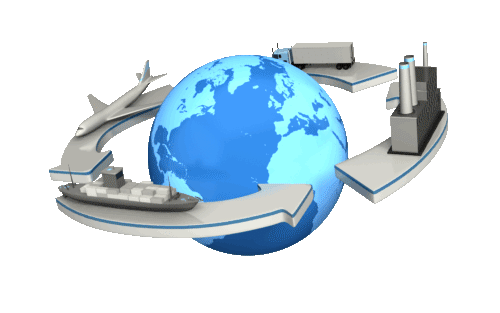
Different Logistics Management Software
The Logistics management software applications have different logistics management software for developers and their convenience. Here are some ready-made solutions for logistic companies.
Here are a few main modules of the Logistics Management Software.
- Order Management:
Receiving and processing an order online usually includes operations of editing and creating inventory, accepting payments, managing customers’ services, checking for fraud, and handling documentation between manufacturers, warehousing, suppliers, and transportation companies.
- Inventory Management:
It is the important part of the supply chain responsible for controlling and documenting the product for sales. Storing, receiving, and tracking inventory, while working with rapid and constant changes needs accurate product information management. So, automating from IMS (Inventory Management System) to a classic spreadsheet delivers the needed clarity centralizing all the data at a single location with the inventory management system.
- Warehouse Management:
It is the set of processes controlling, maintaining, and automating warehouse operations. It includes moving them, receiving items, managing warehouse staff using KPIs, and maintaining safe work conditions by using hardware and software to locate and track items. The warehouse management system consists of tools that streamline the workflow of managing goods from arrival, storage, and tacking within the locations and dispatching.
- Strategic Transport Planning:
The main software suite addressing freight transportation needs and managing all shipping details is transportation management software (TMS). It helps in working with Delivery management and scheduling, cross-docking, last-mile logistics, order tracking, and transportation accounting.
Challenges Faced By Companies Implementing Logistics
Logistics 4.0 represents a particular value-added proposition for those who want to change the complexity of the global supply chain. Reaping the potential benefits of these technologies present the issues for businesses. There are the most important challenges that these businesses face are:
- Reducing shadow IT and information silos
- Breaking free from past-oriented planning
- Ditching the spreadsheet
These are the major hurdles, especially ditching the spreadsheet. Not only do planners wall themself off, and they contribute to the information silos by producing plans in Excel, but they also counteract the mindset of open, transparent workflows that is important to success in the modern supply chain. Thus, logistics management software is used to solve these challenges. Once a person can put together the right list of features and cost to develop a logistic app, it won’t be much of a hassle to make it live.
Bottom Line
Well, we have concluded. These are the basic information of Logistic and its version. Every business faces issues when changes come into the industry, and Similarly, the logistics industry has faced some issues which are solved later. Moreover, Dev Technosys provides good tools and solutions like freight logistics software to solve every logistics issue. If you want to solve the issues, you can contact us.







